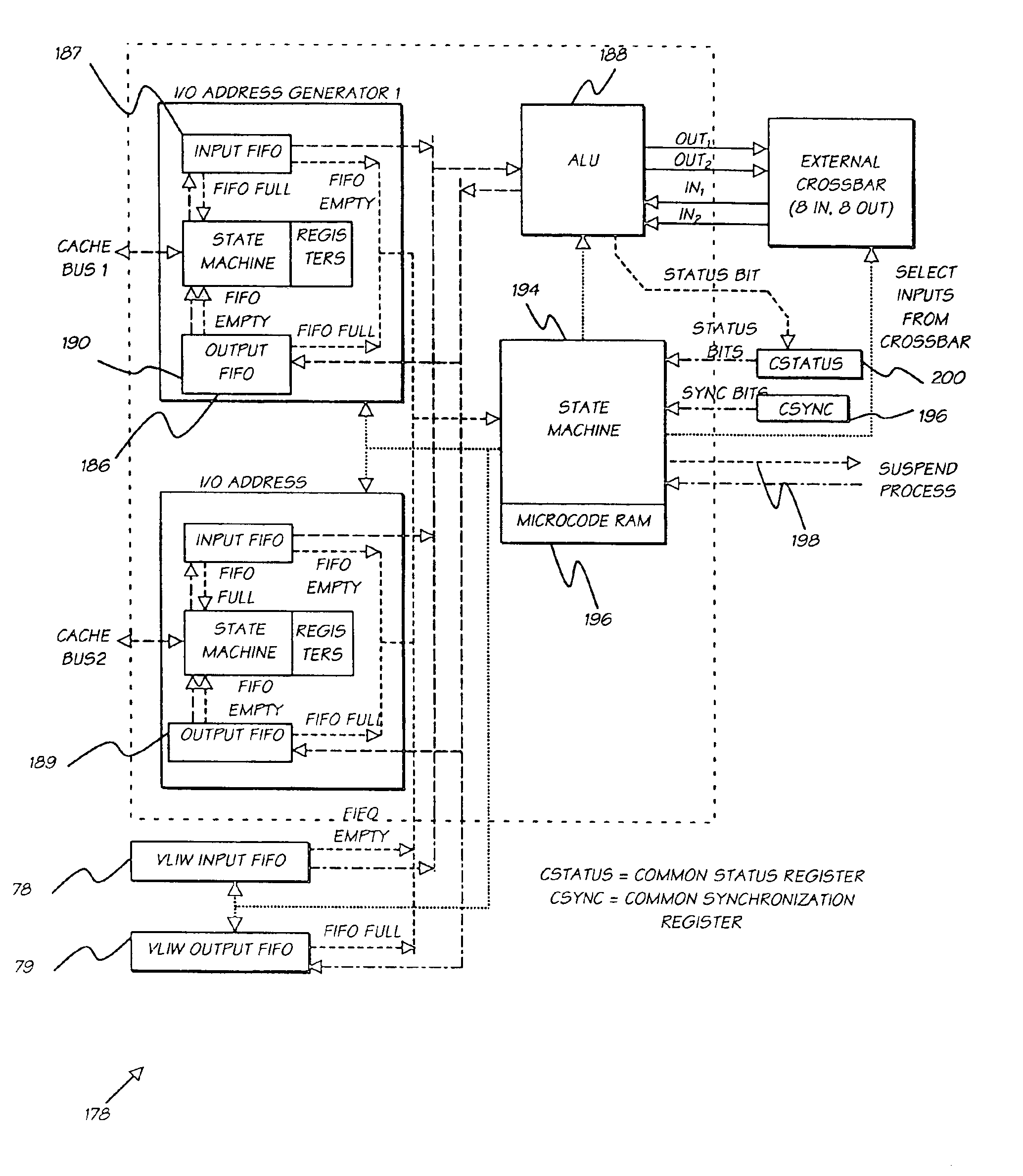Digital camera system containing a VLIW vector processor
a vector processor and camera system technology, applied in the field of digital image processing, can solve the problems of not being able to detect if the data retrieved from the card is correct, not allowing for the fact that ink can fade, and parts of the card may be damaged with dirt, grime, or even scratches,
- Summary
- Abstract
- Description
- Claims
- Application Information
AI Technical Summary
Benefits of technology
Problems solved by technology
Method used
Image
Examples
case 1
BlackDetectCount[target]< 8Δ := ABS(S2StartPixel −ORPrevColStartPixel[Target])WhiteDetectCount[Target] = 0If (0<=Δ<2)BlackDetectCount[Target]++(max value =8)ElseBlackDetectCount[Target] := 1WhiteDetectCount[Target] := 0EndIfPrevColStartPixel[Target] :=S2StartPixelColumnDetected[Target] :=TRUEBitDetected = 1BlackDetectCount[target]>= 8PrevColStartPixel[Target] :=WhiteDetectCount[Target] != 0S2StartPixelColumnDetected[Target] :=TRUEBitDetected = 1TargetDetected[Target] :=TRUETargetColumn[Target] :=CurrentColumn − 8 −(WhiteDetectCount[Target] / 2)
case 2
No special processing is recorded except for setting the ‘PrevCaseWasCase2’ flag for identifying Case 3 (see Step 3 of processing a column described above).
case 3
PrevCaseWasCase2 = TRUEIf (WhiteDetectCount[Target]< 2)BlackDetectCount[Target]>= 8TargetRow[Target] =WhiteDetectCount=1S2StartPixel +(S2RunLength / 2)EndIfΔ := ABS(S2StartPixel −PrevColStartPixel[Target])If (0<=Δ< 2)WhiteDetectCount[Target]++ElseWhiteDetectCount[Target] := 1EndIfPrevColStartPixel[Target] :=S2StartPixelThisColumnDetected := TRUEBitDetected = 0
At the end of processing a given column, a comparison is made of the current column to the maximum number of columns for target detection. If the number of columns allowed has been exceeded, then it is necessary to check how many targets have been found. If fewer than 8 have been found, the card is considered invalid.
Process Targets
After the targets have been detected, they should be processed. All the targets may be available or merely some of them. Some targets may also have been erroneously detected.
This phase of processing is to determine a mathematical line that passes through the center of as many targets as ...
PUM
 Login to View More
Login to View More Abstract
Description
Claims
Application Information
 Login to View More
Login to View More - R&D
- Intellectual Property
- Life Sciences
- Materials
- Tech Scout
- Unparalleled Data Quality
- Higher Quality Content
- 60% Fewer Hallucinations
Browse by: Latest US Patents, China's latest patents, Technical Efficacy Thesaurus, Application Domain, Technology Topic, Popular Technical Reports.
© 2025 PatSnap. All rights reserved.Legal|Privacy policy|Modern Slavery Act Transparency Statement|Sitemap|About US| Contact US: help@patsnap.com



